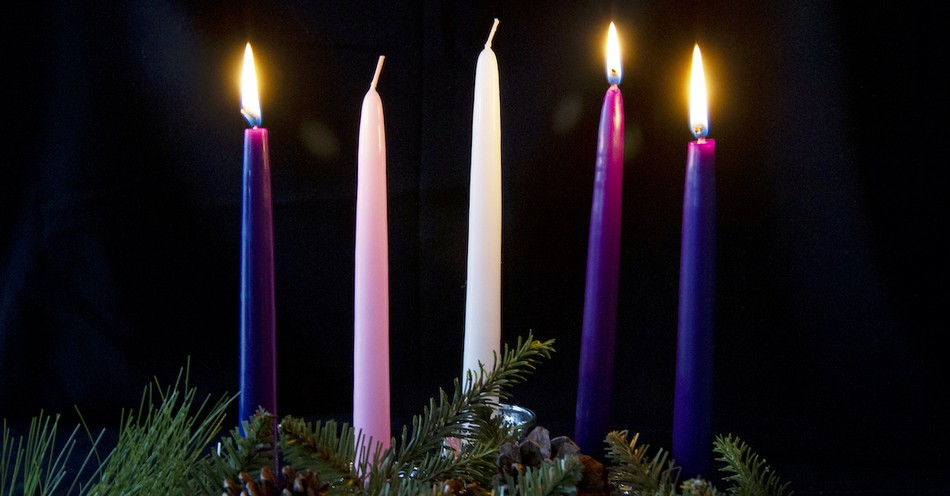Advent traditions will vary by country, but the heart behind Advent is mostly the same across cultures and denominations. Derived from the Latin word “adventus”, the word advent means “arrival” or “coming”. In this instance, it is used to indicate a set time(s) during the month of December to commemorate the coming of the Messiah in Jesus Christ. Advent, like Christmas, is a season of expectation, celebration, and hope, connected to the birth of the prophesied Messiah and the promise of Christ’s subsequent ministry.
Today, Advent is widely observed by Christians of various denominations around the world. It serves as a time of spiritual preparation, reflection, and anticipation for the celebration of Christ's birth at Christmas. Beyond the religious context, Advent has also found a place in secular celebrations, with Advent calendars and Advent wreaths becoming popular symbols of the holiday season.
The History of Advent
A few historical accounts put the inception of Advent as a church tradition somewhere around the 4th or 5th century. Other traditions use Advent to anticipate the second coming of Jesus Christ, which has yet to transpire. In the Roman Catholic Church, Advent became an official part of the liturgical calendar during the 6th century. However, most of what we know and practice today can be traced back to the Middle Ages and the 19th century. Specific liturgical colors (purple or blue) and themes began to be associated with Advent, including the use of Advent wreaths and candles. In 1851, the first mention of an Advent calendar was seen in Elise Averdieck’s picture book, and in 1839, the advent wreath first appeared.
The Advent Wreath
As the story goes, in 1839, a Lutheran minister working at a children’s mission in Germany created a wreath out of the wheel of a cart. The minister placed 20 small red candles out of the wheel's outer ring and four larger white candles inside the ring, lighting the red candles on weekdays and the four white candles on Sundays as a way for the children to count down the days until Christmas.
Advent wreaths were eventually fashioned out of evergreens, twisted together in a circle to symbolize continuous life across the seasons, from the death of winter to the new life of spring. Naturally, this earthly symbolism also points to the spiritual symbolism of newness and the promise of eternal life and salvation offered through the sacrifice of Jesus Christ (John 3:16). The circular nature of the Advent wreath, similar to a wedding ring or band, is further meant to reflect the unending love of Christ and eternal life offered through salvation.
Holly leaves, berries, and seeds are also added to the Advent wreath. Holly leaves can be prickly and therefore used to represent the crown of thorns placed on Jesus’s head during his crucifixion. Berries, which are typically red, also point to Christ’s sacrifice and the bloodshed for sins. Pinecones, seeds, and nuts are also placed within the wreath as a symbol and promise of new life. Together, the elements of the Advent wreath reflect the new life and eternal salvation offered through the death and resurrection of Jesus Christ, who we now celebrate.
Get your FREE copy of 25 Days of Advent Devotionals and Readings! Print these and share them with family and friends to keep your mind's attention and heart's affection on Jesus this holiday season.
Advent Candles Meaning and Symbolism
In almost all Advent traditions, lighting candles is also a prominent feature of each week’s commemorative celebration. Some candles are placed within or near the Advent wreath itself. Other times, they are lit separately on each Sunday beginning four weeks before Christmas. Candles and the light they produce reflect the light that came into the world with the arrival of Jesus Christ.
Some traditions light a single candle on each of the 24 days leading up to Christmas. Other traditions place one large candle in the center of the Advent wreath and light it every day of December until Christmas. The most common tradition, however, typically uses four candles. Each advent candle is lit on one of the four Sundays leading up to Christmas.
In most traditions, the lighting of the four candles (or multiple candles) is meant to be done as a family and will often be used to reflect on the hope, faith, joy, peace, light, and purity that came into the world with the gift of the Messiah. Families will typically light the candle together, often encouraging children to participate in the celebration. Many modern churches light an Advent candle during Sunday services to prepare for Christmas as a church family.
Advent candles have meaning and symbolism for the Christian holiday season. The most common tradition typically uses four candles. Each advent candle is lit on one of the four Sundays leading up to Christmas.
Recommended
Advent Candle Colors
The color of these candles can vary, but it is common for the first, second, and fourth candles to be purple, while the third is rose-colored, red, or a pinkish hue. In some cases, all the candles are red, blue, or white; often, a fifth white candle is placed in the middle of the wreath and lit on Christmas Day itself. Catholic tradition even states that the four candles, representing the four weeks of Advent, each stand for 1,000 years to total the 4,000 years from Adam to the birth of the Messiah.
First Advent Candle: The first purple candle symbolizes hope. Also known as the “Prophecy Candle” in memory of the prophets, particularly Isaiah, who prophesied the birth of Christ. It symbolizes the anticipation felt in awaiting the coming Messiah.
Second Advent Candle: The second purple candle symbolizes faith. Also known as the “Bethlehem Candle,” signifies Mary and Joseph’s journey to Bethlehem.
Third Advent Candle: The third candle is ordinarily pink and represents joy. This candle is pink because the rose color represents joy, also known as the “Shepherd’s Candle.” The third Sunday of Advent is meant to remind us of the world's joy at the birth of Jesus and that the faithful have arrived at the midpoint of Advent.
Fourth Advent Candle: The final purple candle marks the last week of Advent as we anticipate the birth of our Savior. This final candle, also known as the “Angel’s Candle,” signifies peace. It reminds us of the angels' message: “Peace on Earth, Good Will Toward Men” (Luke 2:14).
Regardless of specific Advent traditions and differences in how it is celebrated across cultures and countries, Advent is a time for all believers and families to commemorate the arrival of the Messiah, prepare for his second coming, and celebrate the joy of Christmas together.
To learn more, read: Why are the Advent Candle Colors Purple, Pink, and White?
Prayers for Lighting the Advent Wreath Candles
A traditional prayer for lighting the Advent wreath candles is as follows:
First Week (Hope): "O God, as we light the first candle of this Advent wreath, we open our hearts in hope. May the light of this candle remind us of the hope we have in you. May it inspire us to prepare our hearts and minds for the coming of your Son, Jesus Christ, our hope and our Savior. Amen."
Second Week (Peace): "Gracious God, as we light the second candle of this Advent wreath, we seek your peace. In a world filled with turmoil, may the light of this candle remind us of the peace that only you can bring. Help us to be instruments of your peace in our homes, communities, and the world. Amen."
Third Week (Joy): "Loving God, as we light the third candle of this Advent wreath, we rejoice in your presence. May the light of this candle fill our hearts with the joy of your salvation. Help us to share this joy with others, spreading your love and happiness to all we encounter. Amen."
Fourth Week (Love): "Heavenly Father, as we light the fourth candle of this Advent wreath, we are reminded of your boundless love. May the light of this candle shine forth as a symbol of the love you have shown us through your Son, Jesus Christ. Fill our hearts with your love, and help us to love one another as you have loved us. Amen."
May you be blessed this holiday season as you prepare your heart for Christmas!
Read more Advent Wreath Prayers for Lighting the Candles
Joel Ryan is an LA-based children’s and young adult author who teaches writing and communications at Life Pacific University. As a former youth pastor, he has a heart for children and young adults and is passionate about engaging youth through writing and storytelling. His blog, Perspectives Off the Page, discusses the creative and spiritual life through story and art.
Photo credit:sparrowstock
This article is part of our larger Advent resource library centered around the events leading up to the birth of Jesus Christ. We hope these articles help you understand the meaning and story behind important Christian holidays and dates and encourage you as you take time to reflect on all that God has done for us through his Son, Jesus Christ!
What Is Advent: Definition & Meaning Behind Christmas Tradition
Advent Bible Verses
Advent Readings
Advent Wreath and Candles Meaning and Symbolism
Advent Prayers
Advent Week 1: The Candle of Hope ~ First Sunday of Advent Prayers and Readings
Advent Week 2: The Candle of Peace ~ Second Sunday of Advent Prayers and Readings
Advent Week 3: The Candle of Joy ~ Third Sunday of Advent Prayers and Readings
Advent Week 4: The Candle of Love ~ Fourth Sunday of Advent Prayers and Readings
Related podcast:
The views and opinions expressed in this podcast are those of the speakers and do not necessarily reflect the views or positions of Salem Web Network and Salem Media Group.
Related video:
What were the prophecies of Jesus' birth in the Bible? How many references did the Old Testament make to the coming of a messiah to save the children of Abraham? See the numerous biblical prophecies of the birth of Jesus Christ and what we can learn from the Old Testament about His divinity in this collection of scripture quotes.








